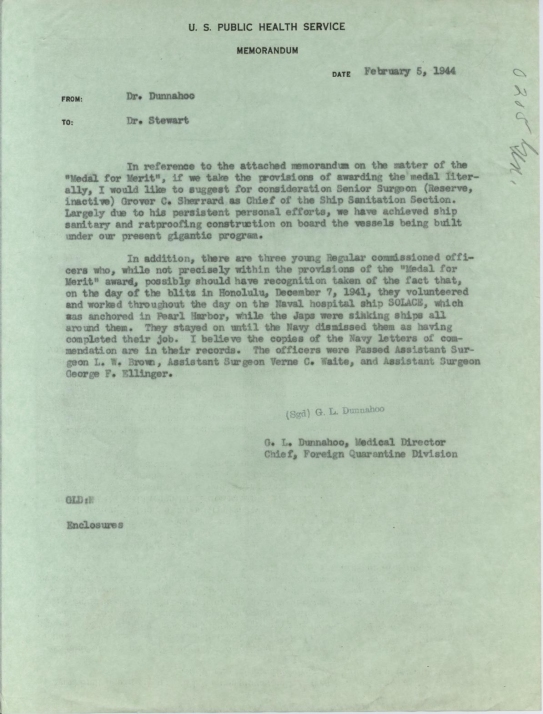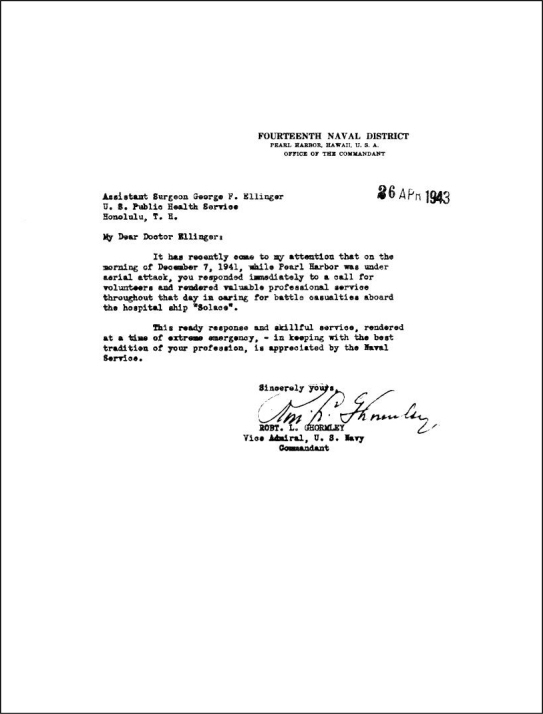
Submitted by LT Russell J. Graham, USPHS
Past Assistant Surgeon Lawrence W. Brown, Assistant Surgeon Verne C. Waite, and Assistant Surgeon George F. Ellinger, all junior Corps officers at the time, were assigned to the U.S. Public Health Service Quarantine Station in Honolulu, Hawaii, the day of the aerial attack on Pearl Harbor on 7 December 1941. Immediately following the first attack, dark black smoke from Pearl Harbor, Hickam Field, and Ford Island would have been visible at the Honolulu Quarantine Station. Amidst the chaos and frantic requests from the Navy for medical assistance, all three officers immediately responded to the Navy Yard in Pearl Harbor. There, the Navy assigned all three men to provide medical care and treatment to military personnel aboard the Navy hospital ship the USS Solace (AH-5), which was anchored in dangerous proximity to Battleship Row and Ford Island.
All three officers disregarded their personal safety and took a great personal risk to board a motor launch to reach the USS Solace amid the mangled and burning debris of the once mighty battleships of the Navy, and impending threat of another attack by the Japanese. Brief mention by the Captain of the Solace, CAPT Benjamin Perlman, USN, briefly indicate that only one “civilian U.S.P.H.S. physician was aboard the Solace,” but this may have been slightly inaccurate because it is believed that one of the Corps officers reported aboard in civilian clothing and the other two reported aboard in uniform.4
All three officers remained aboard the Solace until relieved by the Navy as “having completed their job.” None would receive any official recognition or acknowledgement from the Navy or the Public Health Service for their disregard of personal safety and their professional care rendered to the wounded officers and enlisted men until 1943. VADM Robert Ghormley, USN, Commandant of the Fourteenth Naval District, Pearl Harbor, issued three letters acknowledging (Commendation) the officers for their services. Assistant Surgeon George F. Ellinger was the only one of the three officers to have received a bronze star attachment from the Public Health Service, denoting combat action for the Pearl Harbor Incident, for the Asiatic-Pacific Theater ribbon/medal.
1 Address to Congress and Nation, Franklin D. Roosevelt, December 8, 1941
2 Bureau of Navigation Bulletin, Information for Naval Personnel, U.S. Navy, April 1, 1941
3 Bureau of Navigation Bulletin, Information for Naval Personnel, U.S. Navy, April 1, 1941
4 USS Solace Report of Pearl Harbor Attack, December 12, 1941
http://www.history.navy.mil/docs/wwii/pearl/ph83.htm

